Floyd County makes decisive change in supervisor selection method; rural areas dominate special election
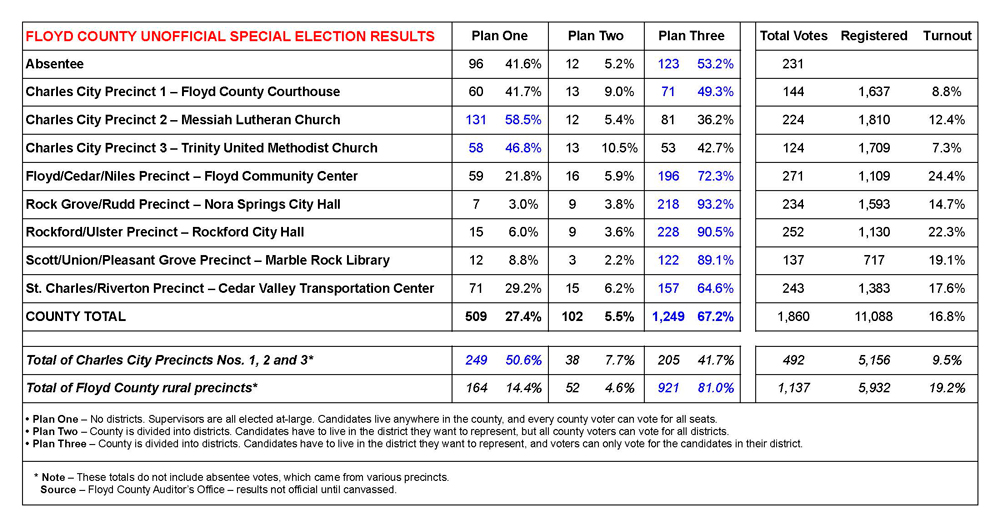
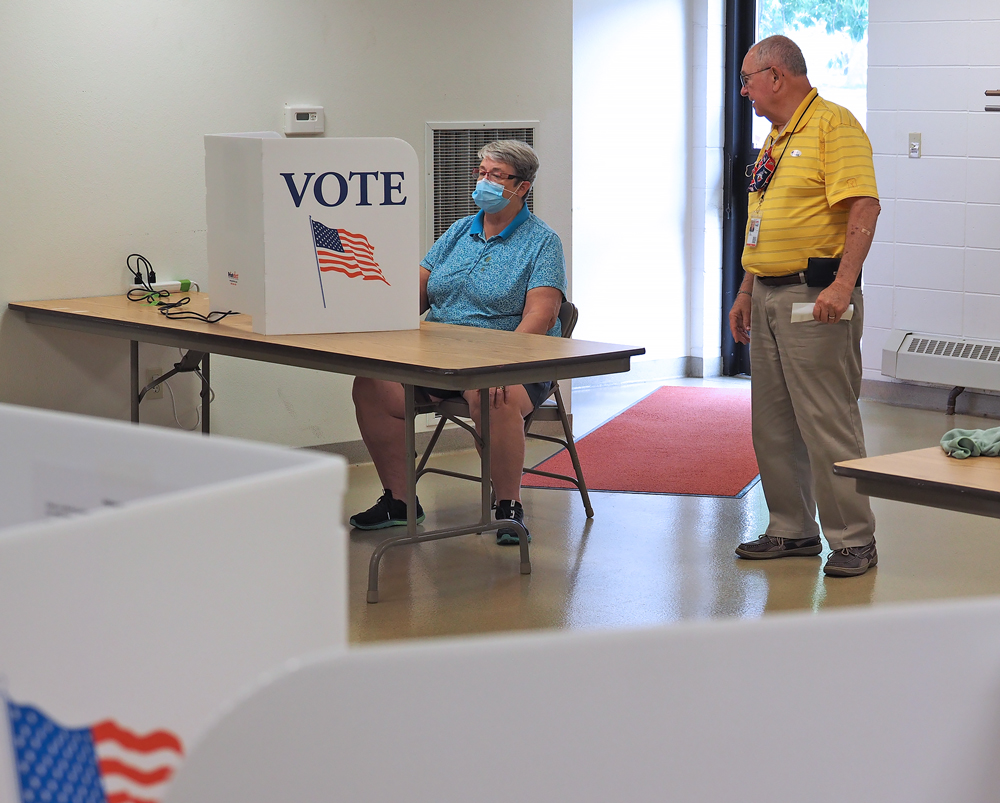
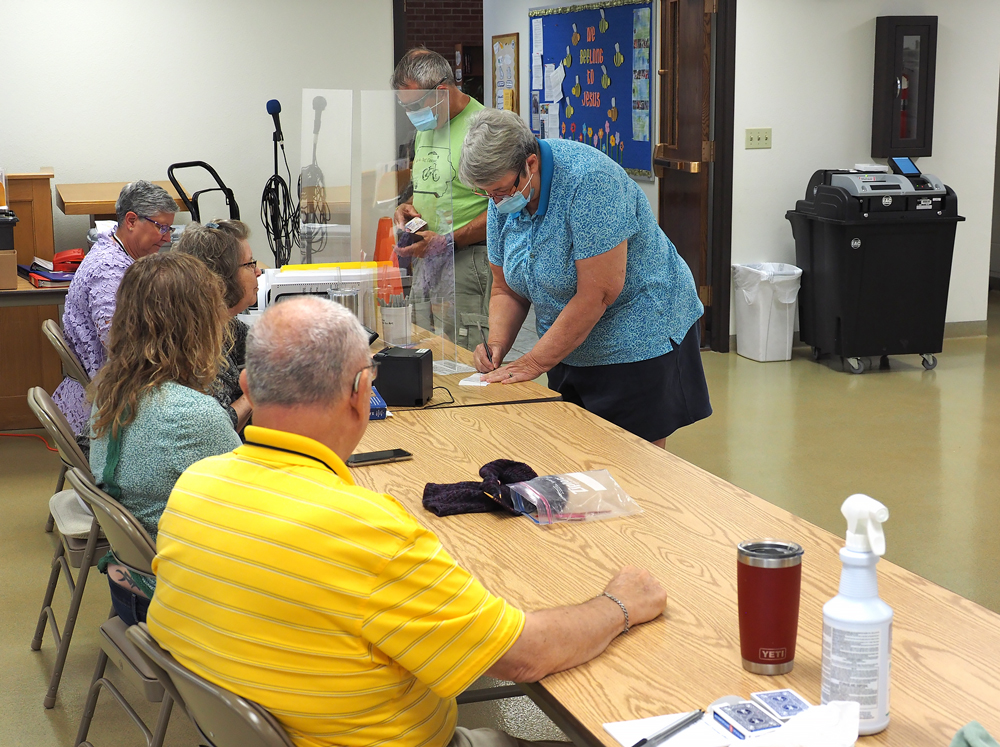
By Bob Steenson, bsteenson@charlescitypress.com
Floyd County will be divided into three supervisor districts and the next members of the county Board of Supervisors will be elected one from each district, chosen by the voters in each district, after a change in supervisor representation was approved by a decisive margin in a special election held Tuesday.
What that means for the current supervisors and any other potential candidates will depend on where those district lines are drawn to go into effect for the November 2022 general election.
The voter turnout Tuesday, as in many special elections, was small — a total of 1,860 votes cast, or only about 17% of the total registered voters in the county.
Nevertheless, that small number of voters overwhelmingly picked Plan Three, the choice recommended by the Coalition for Better County Government, the group most responsible for causing the special election to occur.
Plan Three was the clear winner with more than two thirds of the vote — 1,249 votes or 67.2% of the total, according to unofficial results from the Floyd County Auditor’s Office.
Plan One, the way supervisors are currently elected, received 509 votes or 27.4% of the total, and Plan Two received only 102 votes, or 5.5%.
Plan Three won every precinct in the county except for two in Charles City — Precinct 2 which votes at Messiah Lutheran Church, and Precinct 3, which votes at Trinity United Methodist Church. Both those precincts favored Plan One.
The Coalition for Better County Government and others had submitted a petition calling for the special election as authorized under Iowa Code. Although the current members of the Board of Supervisors initially rejected the petition, they eventually accepted it and set the special election after the coalition filed legal actions.
Persons who support Plan Three said they think that dividing the county into districts and only letting those within a district vote for their own supervisor will help shift the influence for county supervisor selection away from a perceived population dominance by Charles City voters.
Perhaps ironically, that dominance was nowhere to be seen Tuesday.
Although Charles City’s 5,156 registered voters make up more than 46% of the county’s total 11,088 registered voters, Charles City voters accounted for only a little more than a quarter — 26.4% — of the total votes cast in the special election.
Every rural district had a higher percentage voter turnout than the three Charles City precincts.
The three precincts on the western edge of the county, the farthest away from Charles City, overwhelmingly supported Plan Three.
Rock Grove/Rudd Precinct in the northwest corner of the county, which votes in Nora Springs, absolutely crushed it for Plan Three, choosing it by 93.2% of its 234 votes.
Rockford/Ulster Precinct in the center of the western edge of the county picked Plan Three by 90.5%, and Scott/Union/Pleasant Grove Precinct, in the southwest corner of the county, picked Plan Three by 89.1%.
Now that voters have approved Plan Three, the Iowa Code calls for the districts to be drawn by a temporary county redistricting commission, with members selected by the county board of supervisors. The supervisors will also decide whether the commission has three, five or seven members.
The Iowa Code covering how this all works is not completely clear, and Floyd County Auditor Gloria Carr, who in her position is also commissioner of elections, said she has asked Assistant County Attorney Randall Tilton for his advice.
For example, in one part of the Iowa Code dealing with setting up districts after a special election it says a plan for districting “shall be completed not later than November 1 following the special election and shall be submitted to the state commissioner of elections.”
But another part of the code says, “if the plan is selected pursuant to section 331.207, the temporary county redistricting commission shall divide the county before February 15 of the election year.” Section 331.207 is the part of the code dealing with this type of special election.
There are also seeming contradictions on how plans are approved, public hearing requirements and other details.
The plans will likely use the new population information coming out of the 2020 U.S. Census, Carr said.
She said she received word recently from the U.S. Census Bureau saying that population information should be available in one format “in a few weeks,” and “a few weeks after that, we’ll release the same data in an easier-to-use format.”
With the approval of Plan Three, the supervisor seats in each of the three new districts will be up for election in the November 2022 general election. Two of the seats will be for four-year terms and one of the seats will be for a two-year term, with which one is which decided by lot before the primaries next year.
The latest four-year terms of Supervisors Doug Kamm and Roy Schwickerath will end at the end of 2022 anyway, but Supervisor Linda Tjaden was re-elected to another four-year term in the 2020 election, and normally her term would have run until the end of 2024. Instead, her current term will also be finished at the end of 2022.
None of the supervisors had indicated before the special election took place this week whether they would seek re-election.
Depending on how the district lines are drawn, it is possible that two or even all three of the current supervisors could end up in the same district, and then they would have to decide whether or not to compete against each other as well as against the other potential candidates for the district.
The three choices Tuesday were:
- Plan One – No districts. Supervisors are all elected at-large. Candidates live anywhere in the county, and every county voter can vote for all seats. This was the way supervisors had been selected in Floyd County since 1970.
- Plan Two – County is divided into districts. Candidates have to live in the district they want to represent, but all county voters can vote for all districts.
- Plan Three – County is divided into districts. Candidates have to live in the district they want to represent, and voters can only vote for the candidates in their district.


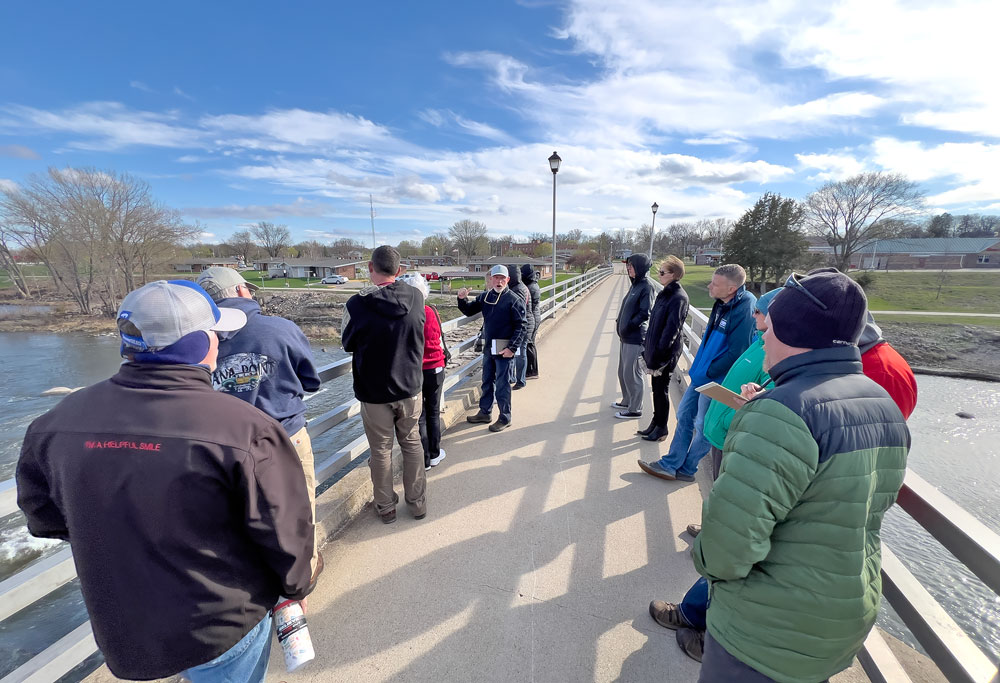
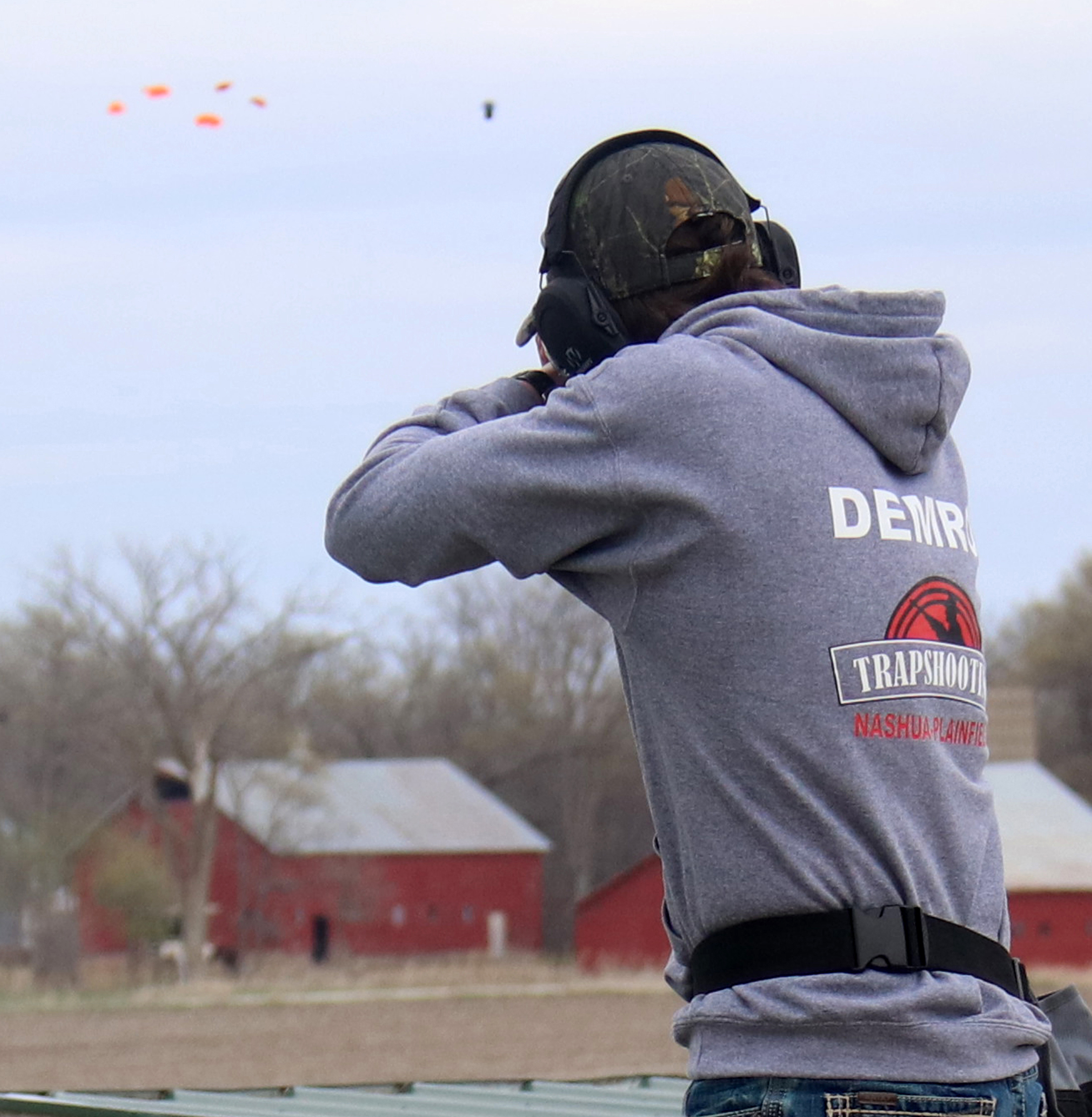



Social Share